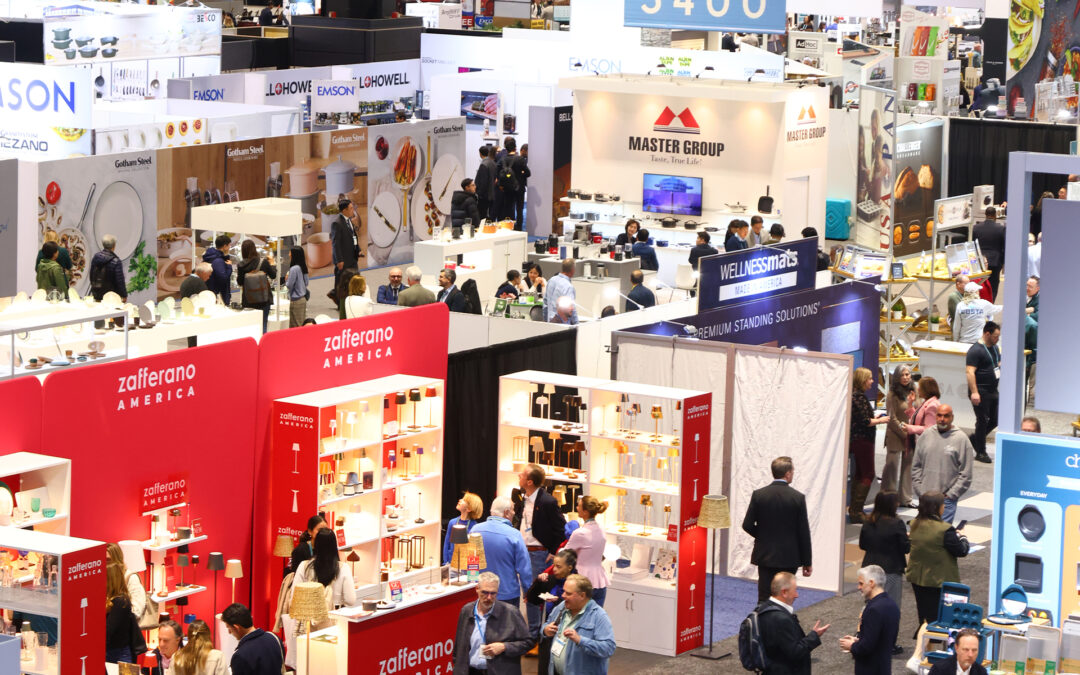Home industry advisor Joe Derochowski, speaking at The Inspired Home Show, said a close watch on eating and drinking trends can inform and drive home product innovation vital to the future of the business.
Derochowski, group vice president and home industry advisor for The NPD Group, presented as part of the show’s Innovation Theater education program. NPD and IRI merged last year, and the company announced this week it has been renamed Circana.
Derchowski said people are spending more money on food in recent years. From 1945 to 2008, there was only one year where the increase in the cost of food outpaced the increase in income, 1946. That has happened several times since 2008. He said this occurs because food isn’t only a budget issue, but it’s also an emotional issue. Even if housewares sales aren’t gaining at the moment, this year follows a tremendous surge of growth during the COVID-19 pandemic. As such, Derochowski said, the housewares industry is in a position of relative strength.
“What we can’t lose sight of is we’re still well above pre-pandemic and not many industries can say that,” he said.
Products such as ice cream makers continue to sell well among products that consumers can use for home entertainment. Still, declines will occur this year in product areas that were heavily purchased in the pandemic, with replacement cycle buying kicking in.
Yet, too, some lack of innovation is evident, Derochowski said. Of course, during the pandemic, retailers played it safe, primarily purchasing tried and true products to satisfy consumers’ immediate needs and not taking chances on newness. However, over the past few decades, he pointed out, housewares saw big gains in years where innovation drove consumer interest such as in 2017 and 2018 when multi-cookers and air fryers took off.
So innovation can lead to big advances in housewares in general and the sectors where it is specifically taking hold.
“It is critical that we continue to innovate,” he said.
A look at restaurant meals provides some idea of where innovation may have a significant impact. Restaurant meals gained for years leading up to the Great Recession, an increase that correlates with the proportional gains of women entering the workforce. However, that leveled off and declined in the recession as consumers recognized that food at home was as much as a quarter the price of restaurant meals. Restaurant dining may increase a bit this year because of workers who have returned to the office eating a few more lunches and some gains in business travel.
The question becomes, Derochowski stated, how can the housewares industry market the savings of food at home? During the Great Recession, restaurant side dishes were a casualty of consumers trying to save money. Trends in frugality that might have been evident in 2008 and 2009 reflect dynamics today, such as hybrid eating where, in one example, consumers order a main dish for delivery but use what’s in the fridge to fill out a meal. They also were and are, changing meals so as to shift protein from the main dish to an ingredient, and, so save some cash. Also, people are cooking more to generate leftovers they can eat later, but often in different applications, such as using dinner leftovers as the basis for lunches perhaps mixed with a new element as in taking a leftover chicken breast and slicing it up as a salad ingredient or saving some steak to fry up with eggs for breakfast.
Housewares manufacturers who keep that in mind might want to develop products that help make side dish prep more convenient. Another consideration: consumers want to do more with less effort all the time, Derochowski pointed out, so new items that turn out reheated food more easily while also making it tastier can gain sales.
Even in the case of lunches eaten by workers returning to the office, housewares that make taking food from home to the workplace a better experience have an opportunity to gain. In addition, Derochowski said, it isn’t just about lunch, as many consumers who have purchased breakfast on the way to work may bring it from home if they can do so conveniently and, better yet, in something that either keeps it nice and hot or can be reheated to something like just cooked condition.
Consumers are time-pressed, whether going to the office or trying to keep a lid on their work-from-home hours, with the result that time spent cooking has declined, so an opportunity exists for items that help make good meals faster.
It’s also worthwhile considering social media, Derochowski said. Housewares producers should keep an eye on social media, and especially on content creators and influencers, as many use home decor and housewares items in innovative ways and even repurpose them. Such creativity can point the way to new products that can appeal to the same demographics that look for ideas and entertainment on platforms such as YouTube and TikTok.





